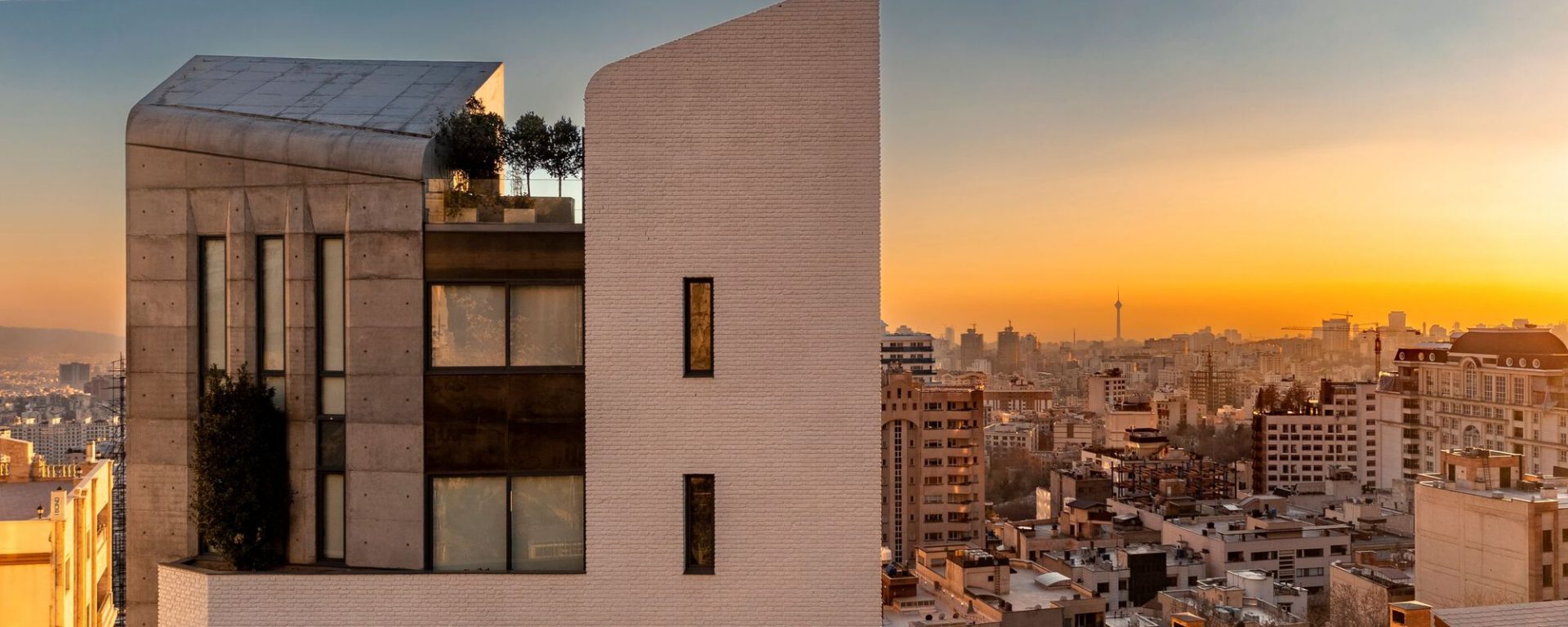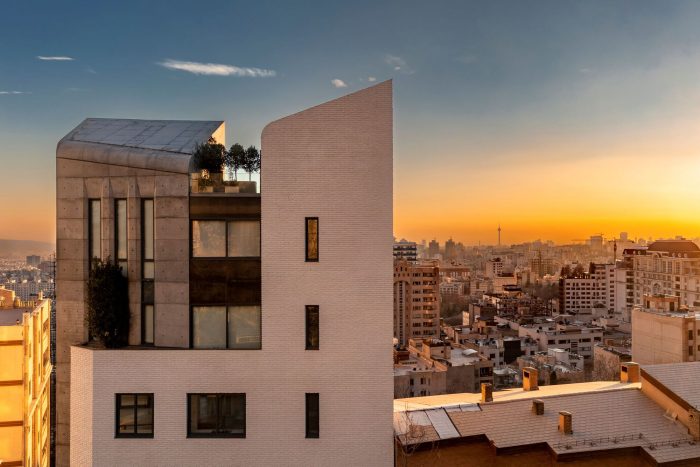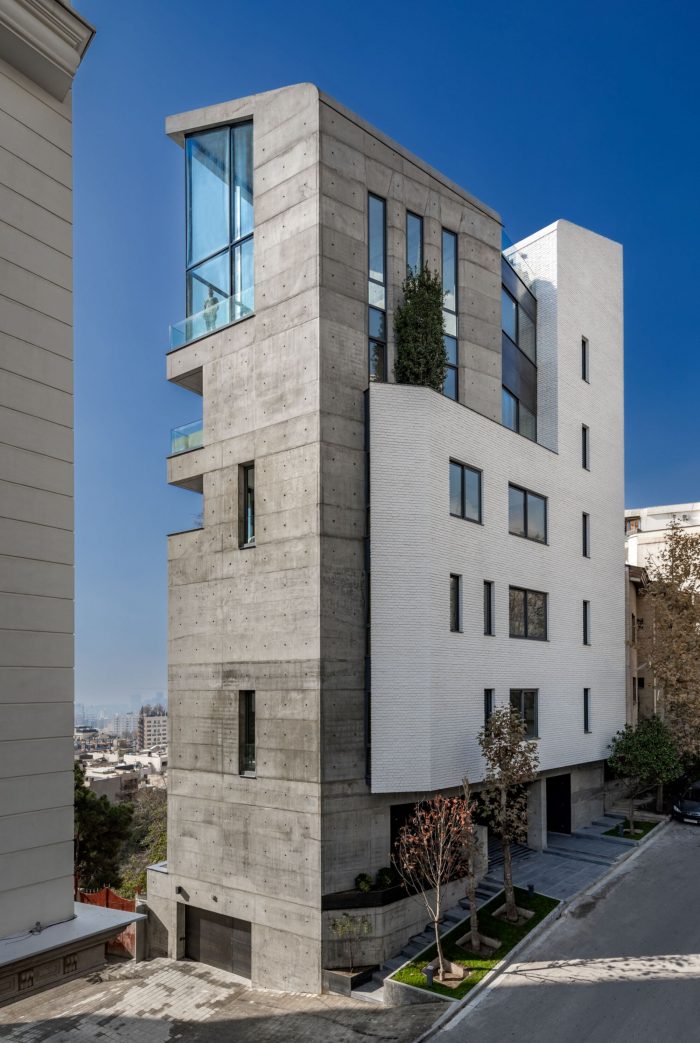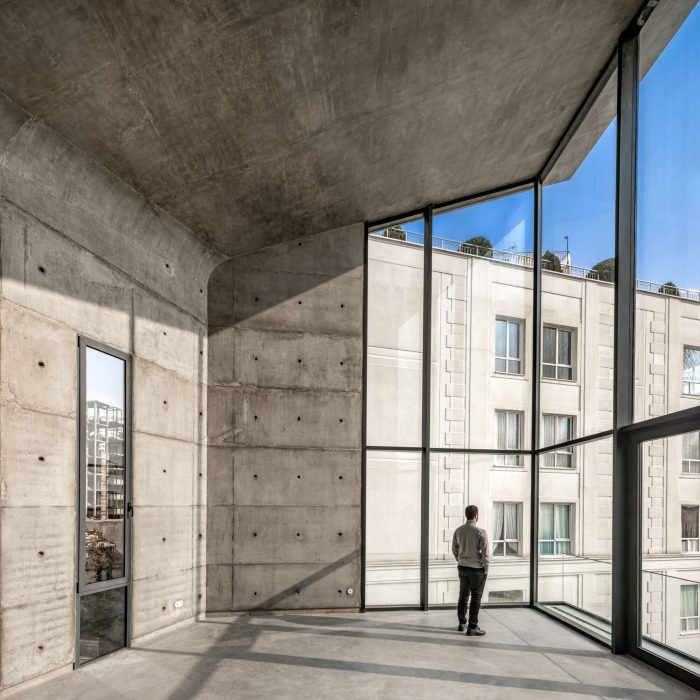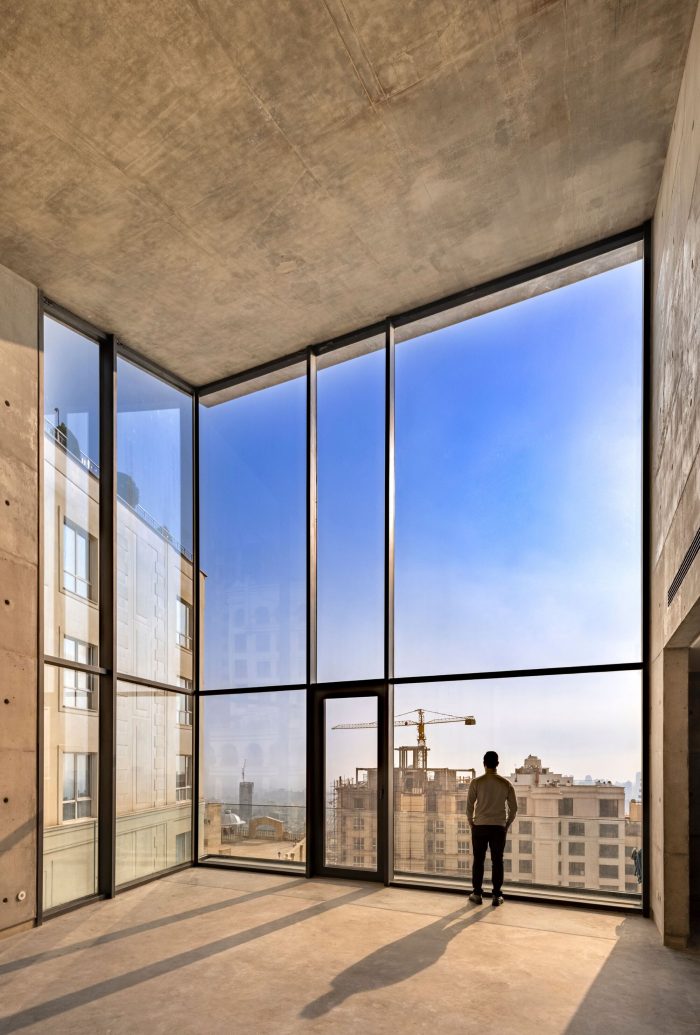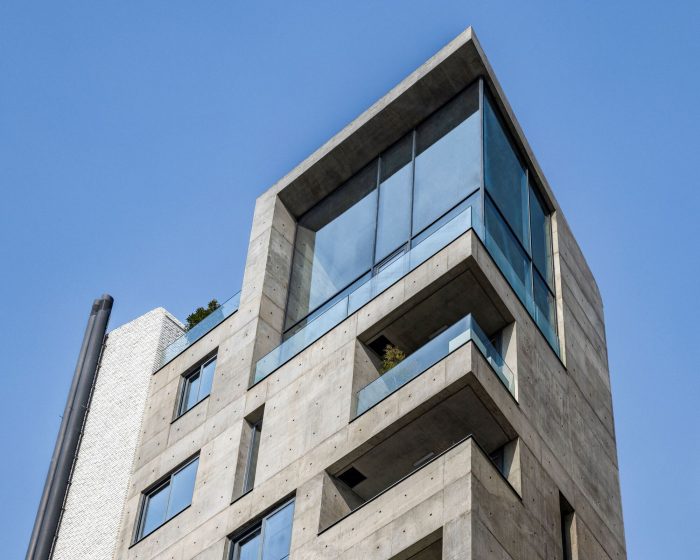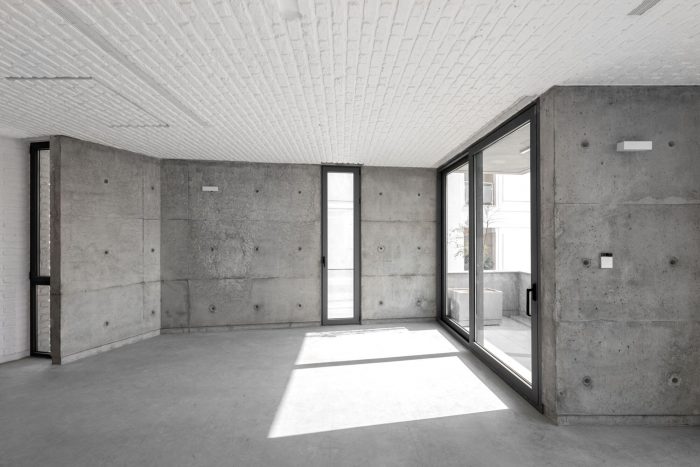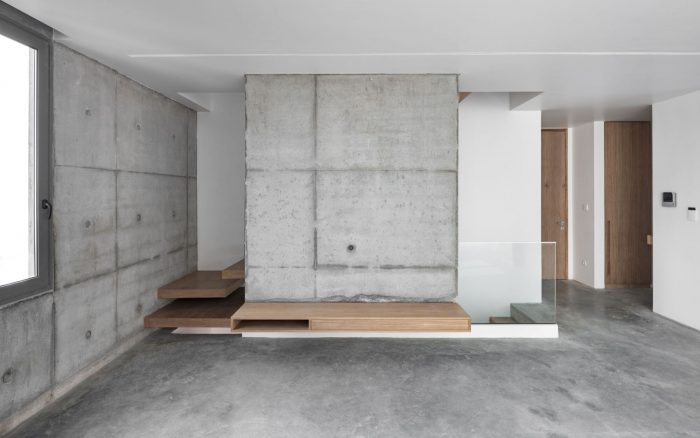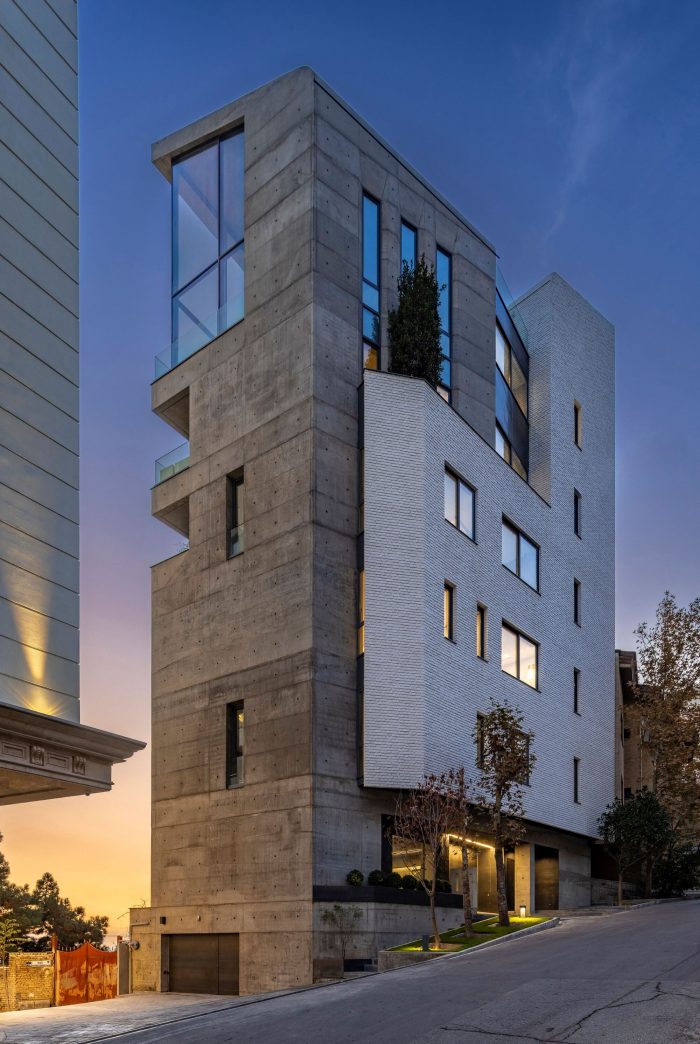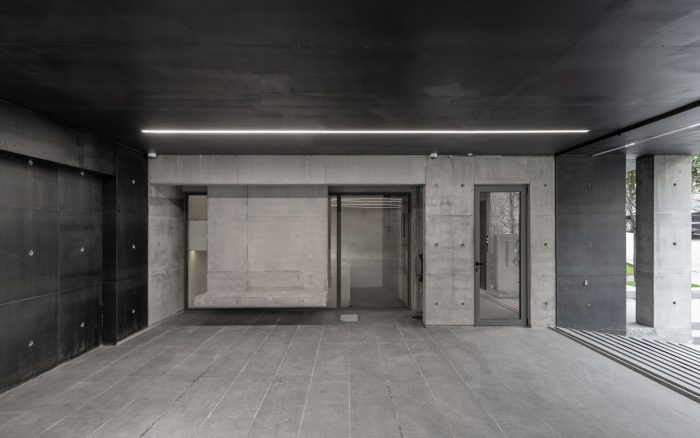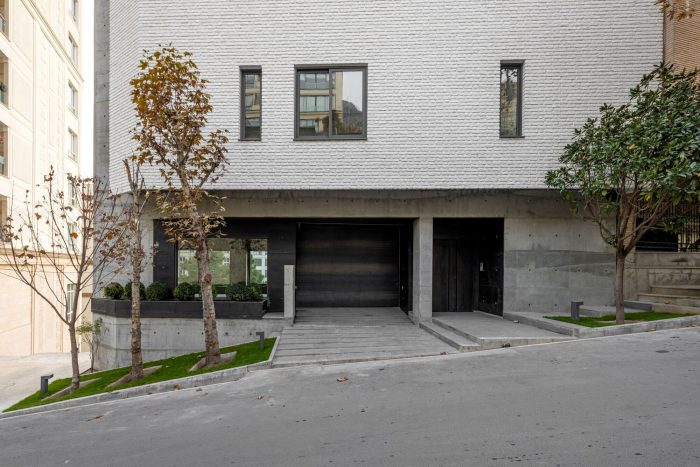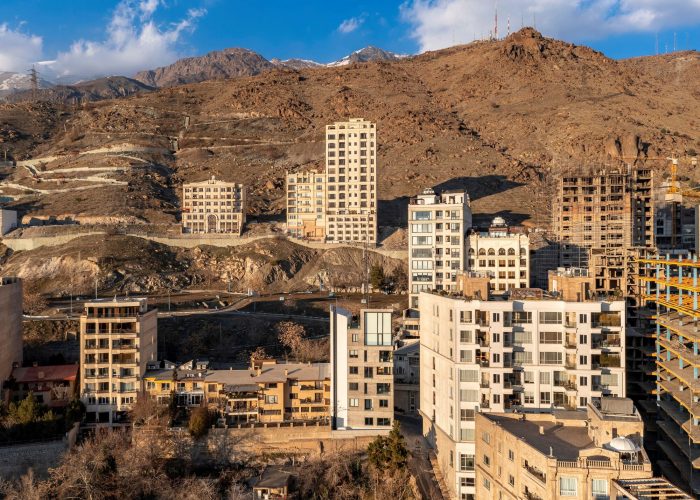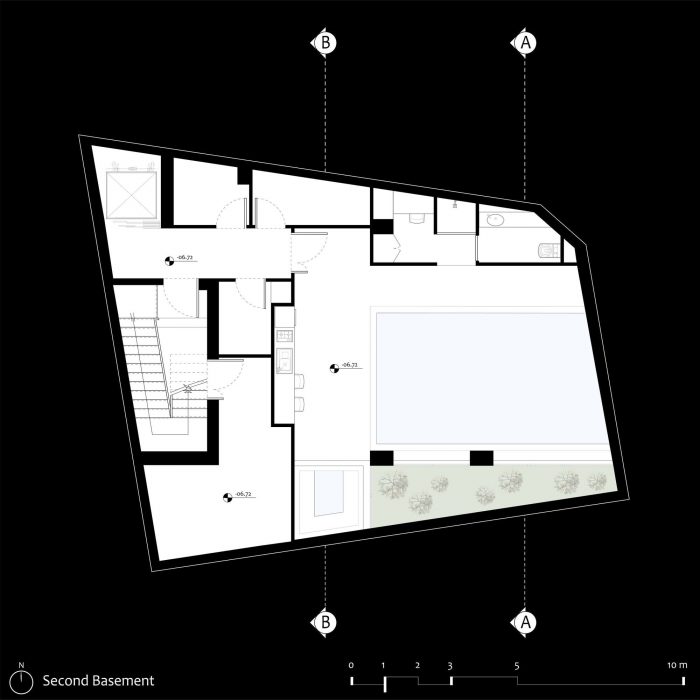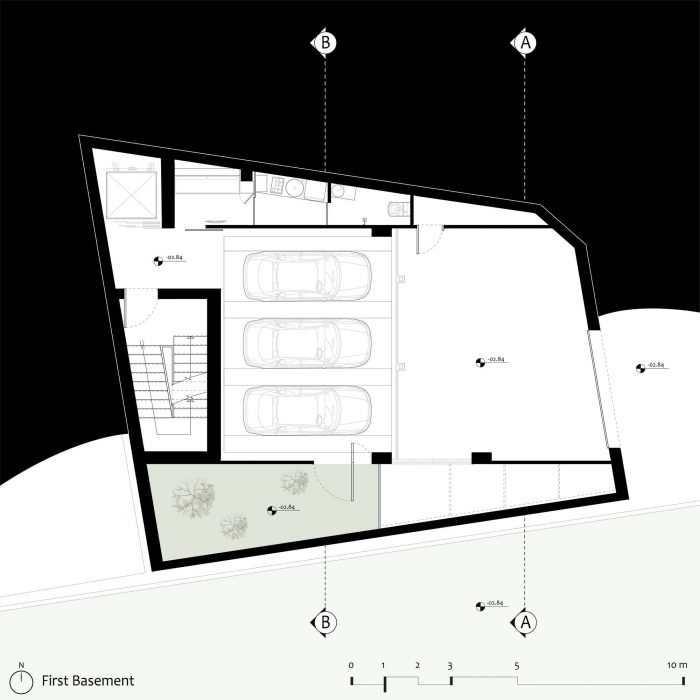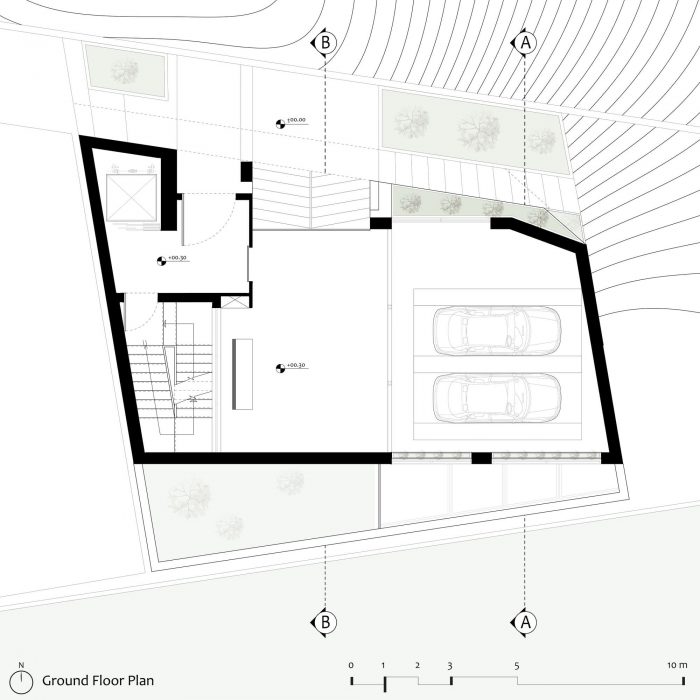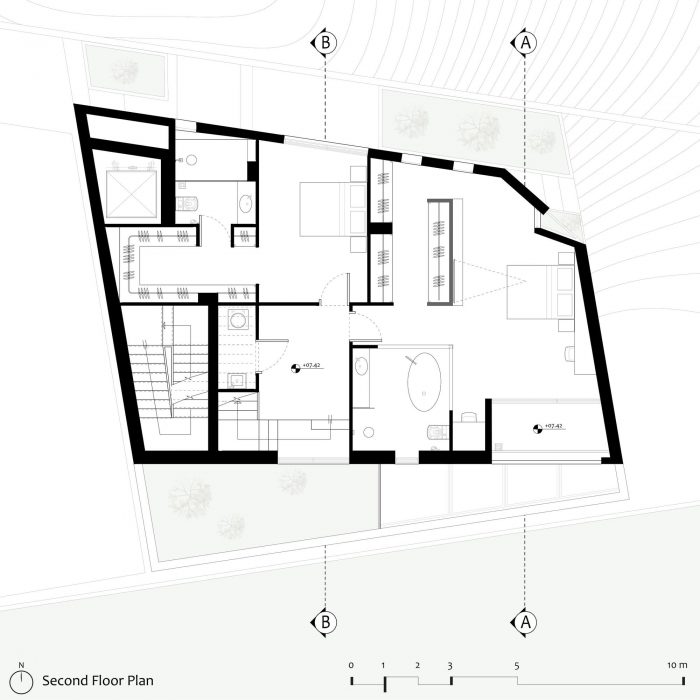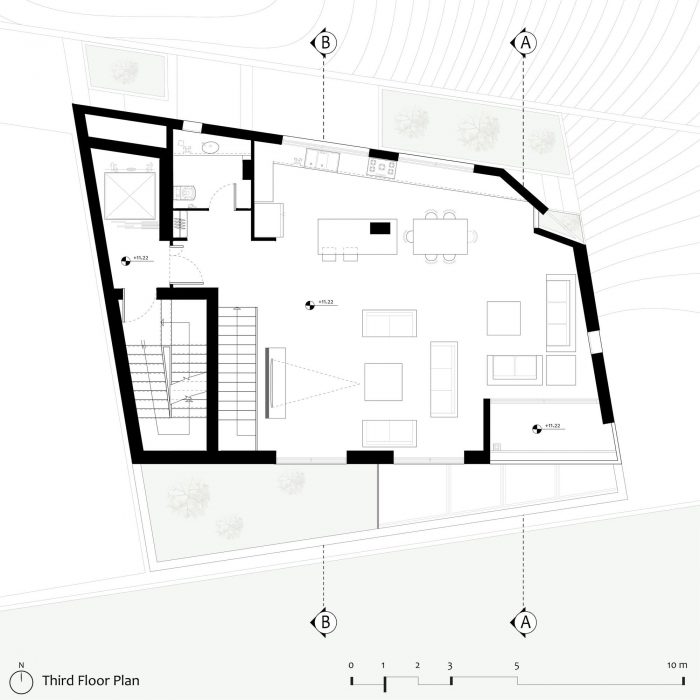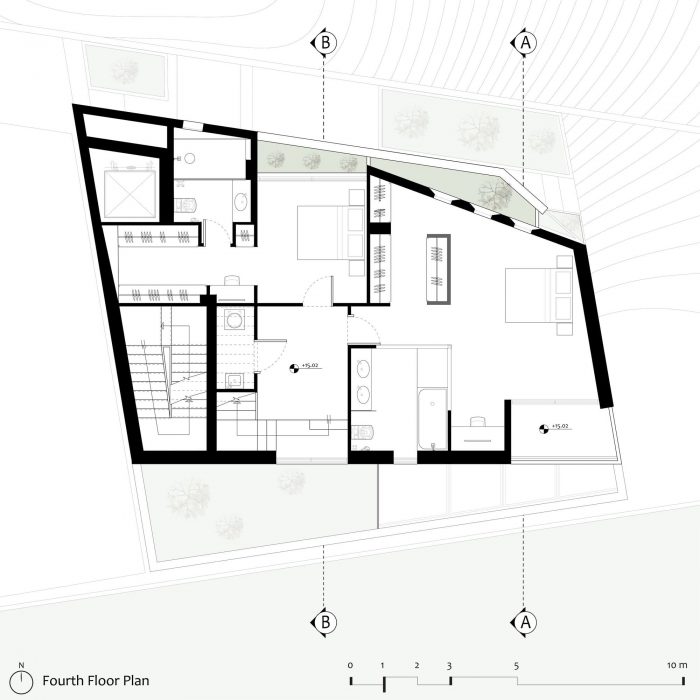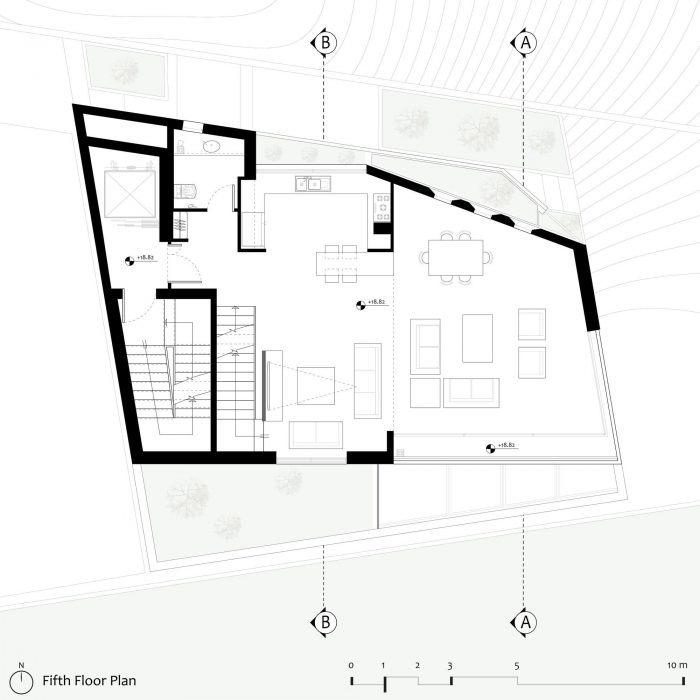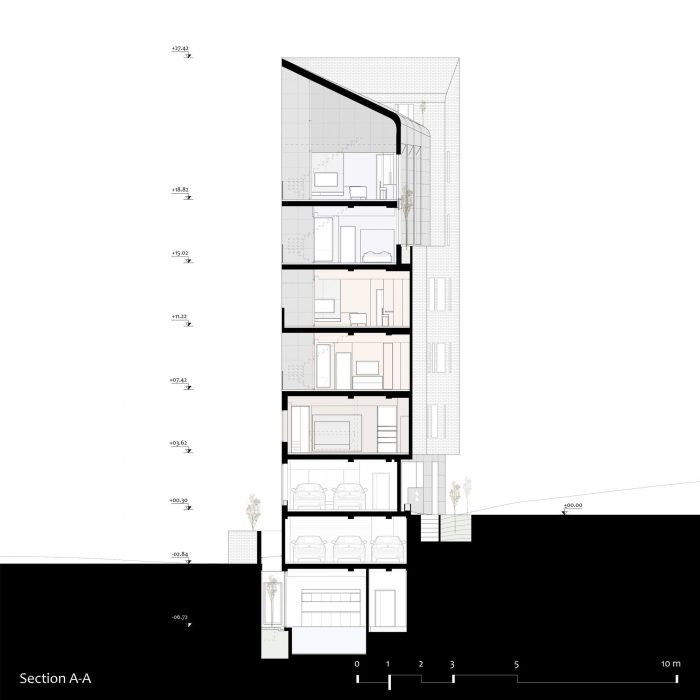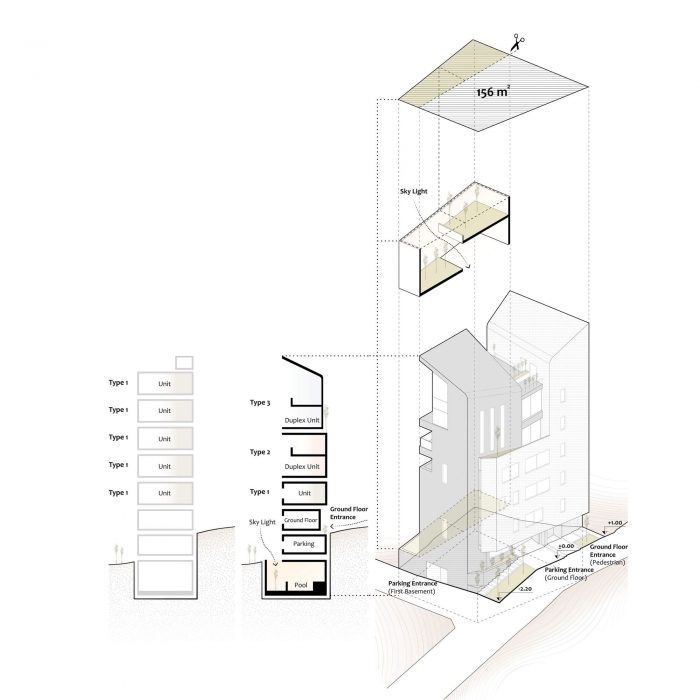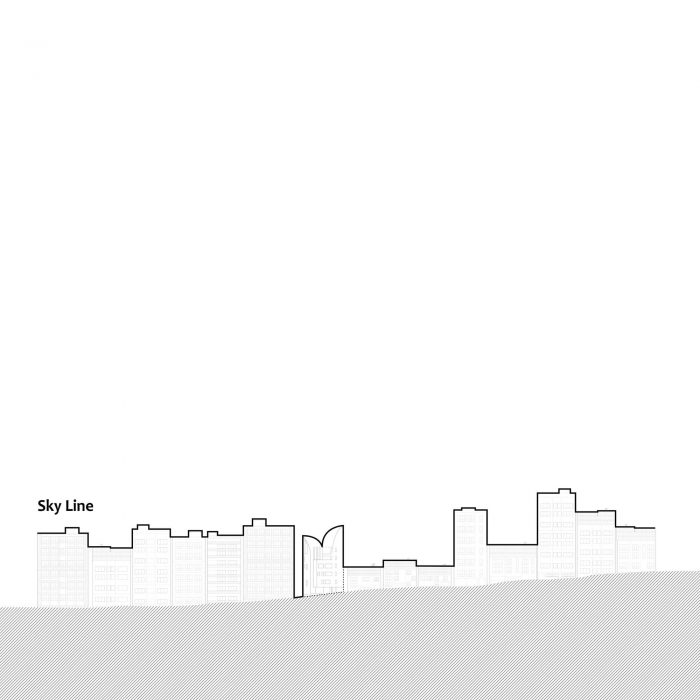14号项目建在一个面积为156平方米的小城市地块上。因此,可以提出一个问题:如何能够在一个紧凑的区域内创造一个条件,从场地的最大潜力中获益,以提高空间质量和建筑的内外组织。
Project Number 14 is built on a small urban plot with an area of 156 sqm. Therefore, a question can be raised on how it can be possible to create a condition in a compact area, to benefit from the maximum potential of the site for the sake of improving the quality of the spaces and internal-external organization of the building.
尽管面积有限,但通过激活其屋顶,该项目试图对城市景观做出改变,并挑战人们对填充式建筑天际线的普遍看法,因此,与一般的邻居不同,它是由类似的公寓单元堆积形成的,试图包含三个不同品种的单元。除了对屋脊的功能解决方案外,这些屋顶还改善了空间收缩和扩张,这在各层的复式组织中也得到了考虑。
Despite the limited area, by activating its roof, the project tries to make a change to the urban view and challenge the common belief about the skyline of the infill buildings, therefore, unlike its generic neighbors which are shaped by the accumulation of similar apartment units, attempts to contain three distinct varieties of units. In addition to the functional solution to the ridge, these roofs improve the spatial contraction and expansion that has also been considered in the duplex organization of the levels.
鉴于该项目与相邻社区之间有相当大的质量差异,以及场地的地形高度差异,截面设计被优先考虑,空间单元,而不是在表面上扩张,而是在彼此的顶部积累,以定义项目的程序图。这种方法也提出了将传统的循环和分区的线性图改变为垂直排列的建议。
Given the considerable mass dissimilarity between the project and the adjacent neighborhood, and the topographic height difference of the site, section designing is prioritized and spatial units, instead of expanding on the surface, are accumulated on top of each other to define the program diagram of the project. This approach also puts forward suggestions for changing conventional linear diagrams of circulation and zoning into a vertical arrangement.
该项目试图与场地现有的地形进行有效的沟通,并通过划分和定义不同的楼层,为地下楼层提供受益于自然采光和通风的可能性,这也是由于建筑法的原因,保留了相对较小的花园。
The project attempts to communicate effectively with the site’s existing topography as well as to provide the possibility of benefiting from natural lighting and ventilation for the underground levels in an encounter with the relatively small garden that remained – because of the construction laws – by division and defining various levels.
建筑物的外部和内部都是用裸露的混凝土结构和喷漆砖这两种材料建造的,在分隔住宅空间和流通区域的同时,应用材料的混合和交织,并尝试用这两种材料和截面上的微型奇物来塑造内部空间。
Both exterior and interior of the building are constructed with two materials of structural exposed concrete and painted brick, which while separating residential spaces and circulation areas, apply the blending and interweaving of the materials and experimenting with these two along with the miniature curiosities in section, to shape the inner spaces.
Architects: NextOffice–Alireza Taghaboni
Area : 156 m²
Year : 2022
Photographs :Parham Taghioff
Manufacturers : Berker, Bongio, Hitachi Air Conditioning, Toto, VitrA, farzanehart studio
Lead Architects : Alireza Taghaboni
Design Team : Alireza Taghaboni, Majid Jahangiri, Sepideh Sarafzadeh, Masoud Saghi, Mohammadreza MohebAli, Mehrdad Makaremi, Morvarid Momayezan, Yaser Karimian, Amin Hoseinirad, Amir Najafi, Mohammad Kahidi
City : Tehran
Country : Iran

